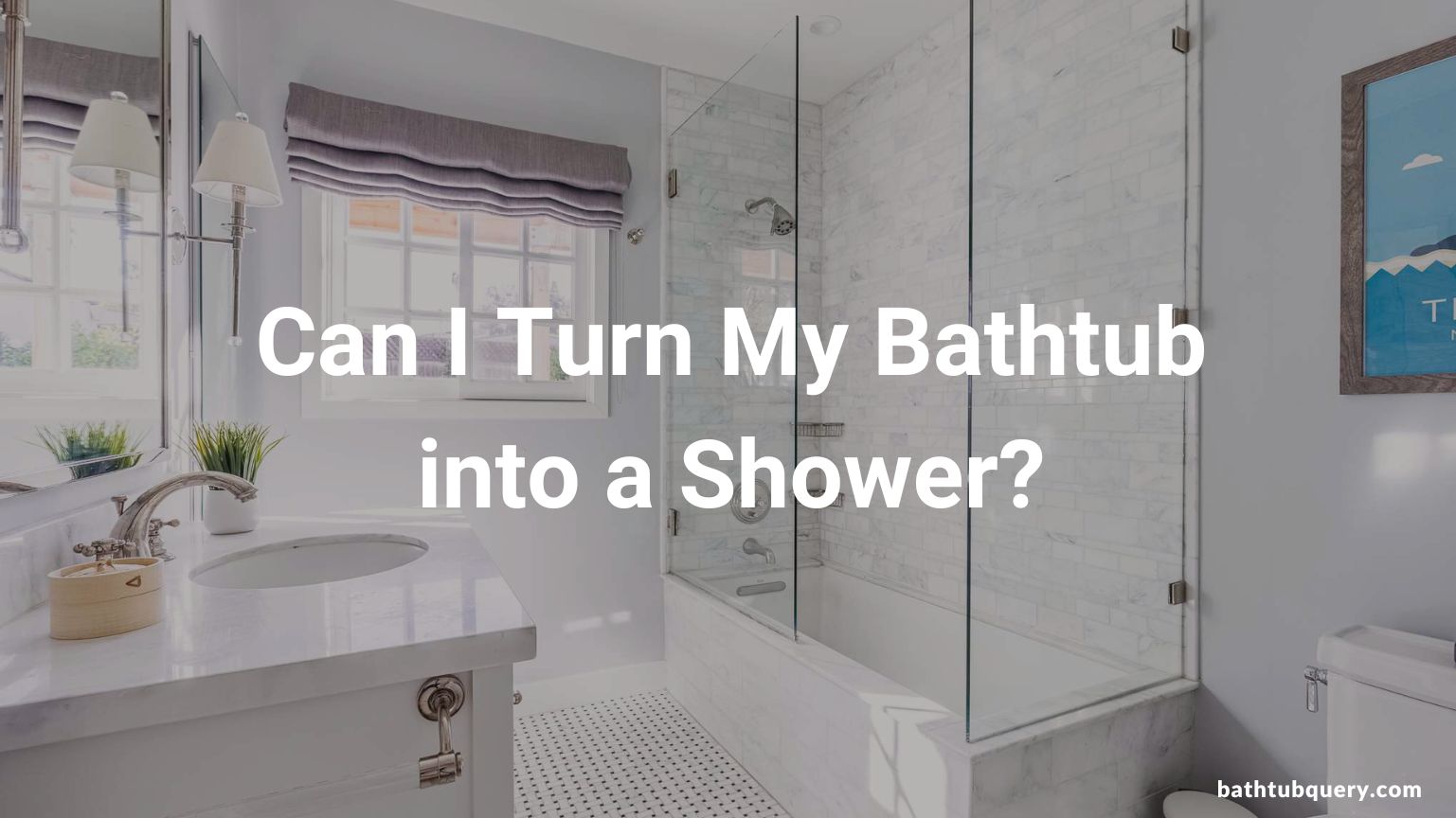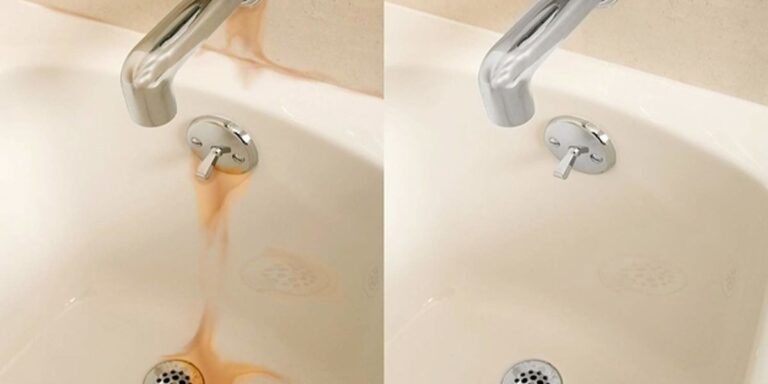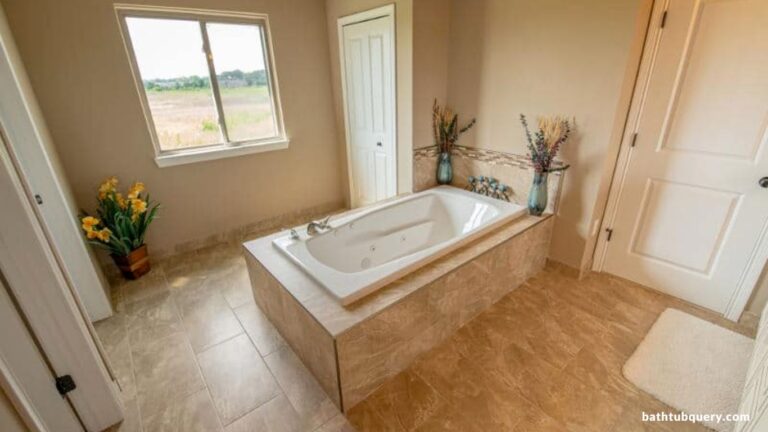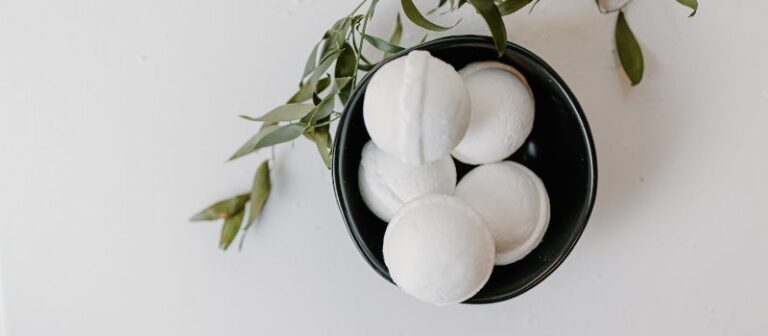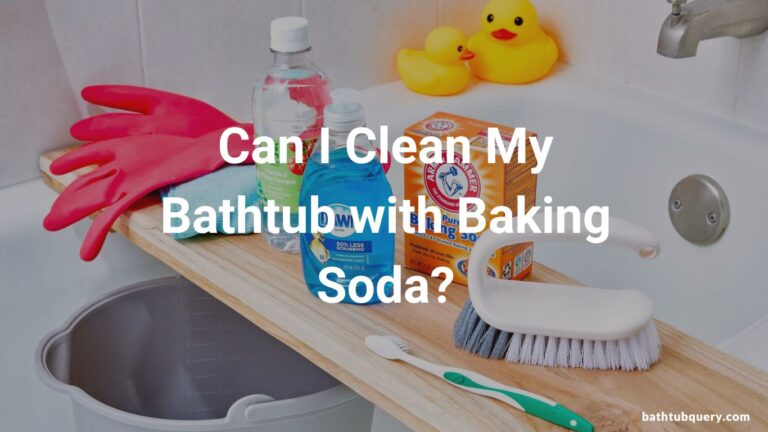Can I Turn My Bathtub into a Shower?
Turn your regular bathing experience into something extraordinary! Are you contemplating: “Can I turn my bathtub into a shower?” Well, let me assure you, you absolutely can, and it’s simpler than you might think!
Can I Turn My Bathtub into a Shower?
You can certainly convert your bathtub into a shower by utilizing a prefabricated shower kit. These DIY-friendly kits come in single and multi-piece units, typically made of fiberglass or acrylic. They may include components such as a shower pan, wall panels, and shower doors.
Understanding your current bathroom configuration is the key to a successful transformation. Consider factors such as:
- Space: Is there enough room for a full shower unit? If not, you may need to expand your bathroom or opt for a shower-bathtub combo.
- Plumbing: Can the current setup handle the demands of a shower? You might need to upgrade your plumbing system.
- Ventilation: Showers generate more steam than baths, and proper ventilation is essential to prevent moisture buildup.
Use the table below to compare the benefits of each shower type:
| Shower Type | Benefits |
|---|---|
| Stand-Alone Shower | Space-efficient, stylish, easy to clean |
| Walk-In Shower | Luxurious, accessible, spacious |
| Shower-Tub Combo | Versatile, perfect for families, retains the ability to bathe |
Step-by-Step Process for Converting a Bathtub into a Shower
If you have determined your bathtub is a good candidate for conversion to a shower, it’s time to plan the remodel. Carefully completing each step is crucial for proper functionality and waterproofing.
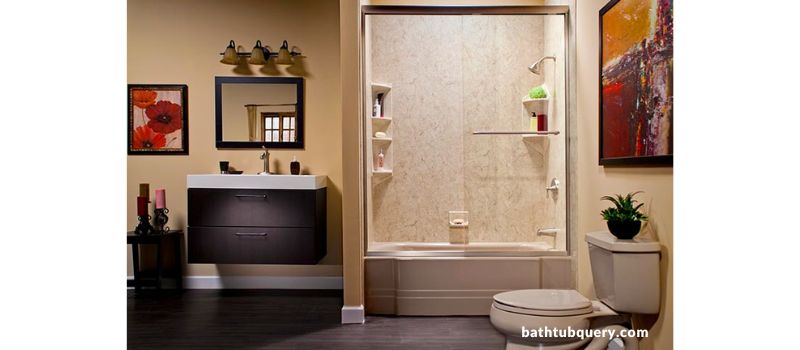
Bathtub Removal
The first task is removing the existing tub. This step will generate debris that must be cleared out. Safety precautions should be taken to avoid contact with any hazardous materials that may be uncovered.
If doing a DIY project, an electric reciprocal saw efficiently cuts through tub caulking and surround materials. Take care not to damage underlying plumbing. Professional removals are faster and help limit dust and debris.
Installation of Shower Base
Once the old tub is fully removed, proper measurements can be taken to order a suitable shower base/pan that aligns with the existing plumbing.
Fiberglass or acrylic shower bases are lightweight, making them easy for DIY projects. Units with built-in tile flanges also simplify waterproofing. Tile showers require constructing a mortar shower pan on-site.
The base must be completely level for proper drainage. Shims can be used to adjust small inconsistencies.
Plumbing Modifications
Some projects require rerouting plumbing to accommodate the new shower layout. Accessing plumbing may involve removing sections of wall or flooring.
If the original tub spout and valves will still align logically with the new shower position, they can potentially be reused. Ensure valve handles clear any new glass doors.
Updating to a shower mixing valve allows easier temperature control versus two separate hot and cold valves.
Waterproofing Measures
Since showers contain large amounts of water, meticulous waterproofing is vital. The base, walls, and all seams should be coated with hot-mopping or a waterproofing membrane.
Cement backerboard must be installed prior to applying tile. Concrete backerboard, rather than drywall, provides moisture resistance.
For fiberglass units, sealant tape should be used during installation for water tightness. Apply 100% silicone caulk at all corners and seams.
Wall Preparation and Surfaces
Walls in a damp shower space need to stand up to moisture. Cement backerboard is the optimal choice. Greenboard drywall offers an economical DIY alternative but requires diligent sealing.
On top of the backerboard, water-resistance materials like ceramic tile, fiberglass, or solid surface panels must be installed. Use materials designed specifically for wet areas.
Tile provides the most customization for creating your dream shower space. Choose slip-resistant floor tile with small grout lines.
Door Installation
Shower doors keep splashing contained while maintaining an open feel. They come in two main types:
Frameless: A sleek, contemporary look with minimal metal framing. May require anchoring to walls for support.
Framed: Metal rods or framing line the glass panels. Often uses hinged doors for access.
Track systems should seal tightly to prevent leaks. Having a professional handle installation is wise.
Final Accessories
Personalize your shower space with any desired accessories:
- Showerheads: Opt for rainfall showerheads, body sprays, or combinations. Check your home’s plumbing and water pressure.
- Grab Bars: Add ADA-compliant grab bars for accessibility and safety, especially for aging homeowners.
- Shower Bench: Built-in or removable benches offer seating for bathers.
- Shelving: Waterproof shower nooks or cornershelves hold toiletries neatly.
- Shower Niche: Recessed in the wall, shower niches provide storage space.
Once all fixtures are installed, do a careful check to ensure proper sealing throughout.
Maintaining and Enjoying Your Remodeled Shower Space
Once the hard work of bathtub to shower conversion is complete, be sure to:
- Seal the shower each year as part of routine bathroom maintenance to prevent mildew and leaks. Reapply caulk if needed.
- Clean shower doors regularly using squeegees, microfiber cloths, and shower cleaners to keep glass sparkling and buildup at bay.
- Descale the showerhead about twice per year by soaking it in white vinegar and water to keep your water pressure strong.
- Consider waterproof speakers to enjoy music in the shower. Steam-resistant units with Bluetooth connectivity keep wires out of the mix.
- Store shower items attractively in matching bins, shelves, and baskets for an organized look.
- Consider accent lighting like LEDs to create a spa ambiance. Or install a heat lamp for post-shower comfort.
- Add textured surfaces – mosaic tiles, pebble floors, wood look porcelains – for visual interest underfoot.
How Can I Evaluate if My Bathtub Can Become a Shower?
The key factors that determine if your current bathtub can be transformed into a shower stall are:
- Bathtub Size and Layout
- Plumbing and Drain Locations
- Structural Support
- Budget
You may be able to make your own assessment on size and layout, but professional input is recommended to fully evaluate the feasibility.
Minimum Bathtub Size for Shower Conversion
For a tub-to-shower conversion to make sense, there must be adequate space for a functional shower setup. Standard minimum dimensions for shower stalls are:
- Square Shower Stall: 36 inches x 36 inches
- Rectangular Shower Stall: 30 inches x 60 inches
- Neo-Angle Shower Stall: 32 inches x 32 inches to 42 inches x 42 inches
If your existing bathtub is smaller than these dimensions, converting to a shower likely won’t work. For reference, a standard 5-foot bathtub is approximately 60 inches long and 30 inches wide. Smaller alcove tubs or cramped corner tubs often don’t allow enough space for shower reconfiguration.
Bathtub Layout Factors
Beyond raw size measurements, the specific layout of your existing tub will impact conversion options.
- Alcove Tubs: The most common type, alcove tubs are recessed into three walls. Since they are already part of an enclosure, converting to a shower is very feasible.
- Corner Bathtubs: Corner tubs maximize bathroom space efficiency. Converting to a neo-angled shower is an ideal option.
- Clawfoot or Standalone Tubs: Vintage or ornamental free-standing tubs are difficult to convert due to plumbing access underneath.
- Tub/Shower Combos: Some bathrooms have a tub combined with a showerhead area. This layout typically allows for straightforward conversion to a shower-only space.
Assessing Plumbing and Structural Elements
To confirm whether conversion is possible, the existing plumbing and structural elements need to be examined.
- A plumbing professional must evaluate whether the current drain location will functionally align with the shower setup. Moving the drain requires major construction.
- Structural reinforcement may be needed to support the weight of a large shower enclosure versus a tub.
- Wall composition is also a factor. Tile walls will be relatively easy to work with, while plaster walls present more challenges.
Considering Budget for Bathtub Conversions
Budget plays a key role in deciding on a tub-to-shower conversion. You want to make sure the project cost aligns with the value increase to your home.
According to the experts at Remodeling Magazine, the national average cost for a bathtub to shower conversion is $5,500. The price can range significantly based on factors like:
- Materials chosen (tile, glass, fiberglass, etc.)
- Layout complexity
- Plumbing modifications needed
- Scope of demolition
- New waterproofing requirements
- Accessories or benches added
Some smaller DIY conversions can be completed for under $2,000. High-end conversions with extensive tilework can exceed $15,000. As you evaluate your goals, be sure to obtain multiple quotes to understand cost considerations.
Key Takeaways
- Turning your bathtub into a shower is a practical and achievable home renovation.
- Evaluate your current setup and plan the transformation accordingly.
- Always consider safety, comfort, and your personal preferences in your design.
- Professional help can ensure the process goes smoothly.
FAQs
Can I turn my small bathtub into a shower?
Yes, stand-alone showers are particularly space-efficient and can fit into the same area as most bathtubs.
Do I need a professional to transform my bathtub into a shower?
While DIY is possible, professionals ensure safe and efficient execution, especially for plumbing and demolition.
Is a bathtub to shower conversion expensive?
Costs vary based on shower type, materials used, and whether professional help is employed.
Will converting my bathtub into a shower impact my home’s resale value?
While it can depend on the buyer, many appreciate a modern, sleek shower, potentially increasing your home’s appeal.
Can I revert my shower back into a bathtub in the future?
Yes, with proper planning and professional help, it’s possible to revert to a bathtub setup.
Related guides:
- How Long After Tanning Can You Shower?
- How Much Water Does Your 5 Minute Shower Use?
- How Much Water Does A 10 Minute Shower Use?
- Does Replacing a Tub with a Shower Hurt Resale Value?
- Is It Cheaper To Have A Bathtub Or A Shower?

William J. Bullock is a licensed plumber with over 15 years of experience installing and repairing bathtubs. He runs his own plumbing company in Greenville and serves residential and commercial clients. William is dedicated to providing honest, transparent advice to help homeowners make informed decisions about their bathroom renovations.
He has established expertise in selecting bathtubs, planning custom installations, diagnosing issues, and completing repairs. William aims to share practical tips and reliable recommendations based on extensive hands-on work. When he isn’t on a job site, William enjoys spending time with his family and volunteering at local community events. He takes pride in delivering quality service and enjoys helping people upgrade their homes.

